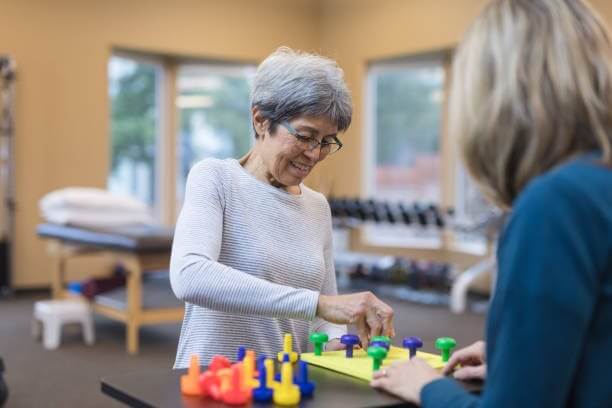by : Marie Serrado
Aging is a natural part of life, but it comes with its own sets of challenges. As individuals grow older, they may face limitations in mobility, changes in cognitive function, and adjustments to daily routines. Occupational therapy offers a holistic approach to addressing the needs of aging adults, focusing on enhancing independence, promoting well-being, and maximizing participation in meaningful activities. In this blog post, we’ll explore the transformative power of occupational therapy in improving the quality of life for aging adults.
Independence:
Everyone enjoys their independence, and when individuals experience difficulty in everyday tasks it can be a bit frustrating. Occupational therapists specialize in assisting individuals to enhance their ability to perform essential self-care activities crucial for daily life. These tasks encompass a broad range, from eating and dressing to maintaining personal hygiene. Moreover, individuals with disabilities may necessitate tailored adjustments to their living environment and specialized equipment, both of which occupational therapists are adept at assessing and incorporating into therapy sessions.
Mobility and Fall Prevention:
Ensuring mobility and averting falls are key focal points in occupational therapy for seniors. Therapists evaluate balance, coordination, strength, and flexibility to pinpoint areas needing attention. Through tailored exercises, interventions, and aids, they aid seniors in improving mobility, boosting strength, and minimizing fall risks. Additionally, therapists may suggest home adjustments, like installing grab bars or eliminating tripping hazards, to foster a safer living space.
Benefits to Occupational Therapy:
Heritage-RC highlights Occupational Therapy’s diverse benefits, including physical improvements, increased independence, and boosted confidence in daily activities. It also empowers individuals to take charge of their well-being and pursue their goals effectively. Some benefits to Occupational Therapy includes:
- Improved independence in daily activities
- Enhanced quality of life
- Increased physical strength and flexibility
- Better management of chronic conditions
- Enhanced cognitive function and memory
- Improved emotional well-being
- Reduced fall risks and improved balance
- Enhanced ability to engage in meaningful activities
Conclusion:
Occupational therapy plays a significant role in supporting older adults to age gracefully and maintain their independence. By addressing physical, cognitive, emotional, and social needs, occupational therapists empower aging adults to live life to the fullest and embrace the opportunities and challenges that come with aging. As advocates for healthy aging, occupational therapists contribute to the well-being and quality of life of aging adults, ensuring that they continue to thrive and flourish in their later years.
References:
- Fahad. (2023, April 6). 6 ways occupational therapy improves quality of life for patients of all ages. iinn. https://www.iinn.com/occupational-therapy-improves-quality-of-life-for-patients-of-all-ages/
- Occupational therapy for older adults. Heritage Retirement Communities – Retirement Communities. (2024, January 25). https://heritage-rc.com/resources/occupational-therapy-for-older-adults#:~:text=Occupational%20therapists%20assess%20an%20individual’s,reduce%20the%20risk%20of%20falls.





